HDR and 4K are widely used terms referring to technologies that enhance the visual quality of content. A 4K HDR image appears significantly richer and more lifelike compared to standard Full HD with conventional color rendering.
However, integrating these formats into broadcasting raises two critical questions: Are these technologies worth the investment from the audience’s perspective, and is the infrastructure ready to support the added load? Let’s break it down.
What is 4K, and why is it used?
4K refers to ultra-high-definition resolution — 3840x2160 pixels. That’s a substantial increase over standard Full HD (1920x1080), meaning there are more pixels packed into the same screen size. This higher pixel density results in incredibly sharp visuals, especially noticeable on larger displays. Where Full HD might show pixelated "jaggies" along object edges, 4K delivers smooth lines and textures with minimal visible distortion.
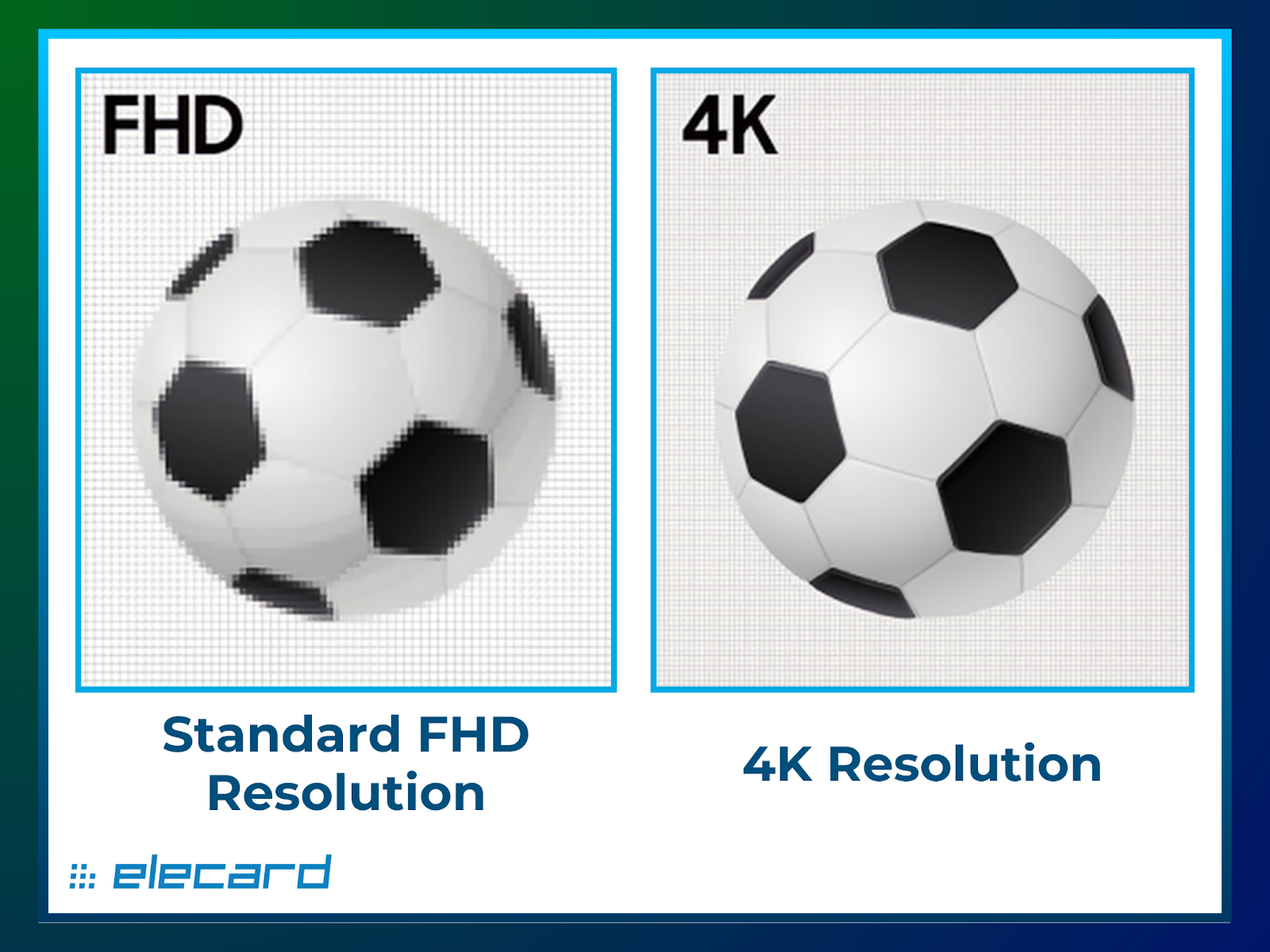
Visual comparison between Full HD and 4K
But pixel density alone is no longer enough to truly impress viewers. That’s where additional technologies like HDR come in, enhancing color depth and brightness to create a more vibrant image.
What is HDR, and how is it different from SDR?
HDR (High Dynamic Range) is a technology that extends the contrast range between the brightest and darkest parts of an image. In contrast, SDR (Standard Dynamic Range)—the long-standing industry standard—renders only about 36% of the colors visible to the human eye from the original scene. HDR captures around 76%. This isn’t just a marketing claim—it’s a measurable leap in visual perception.
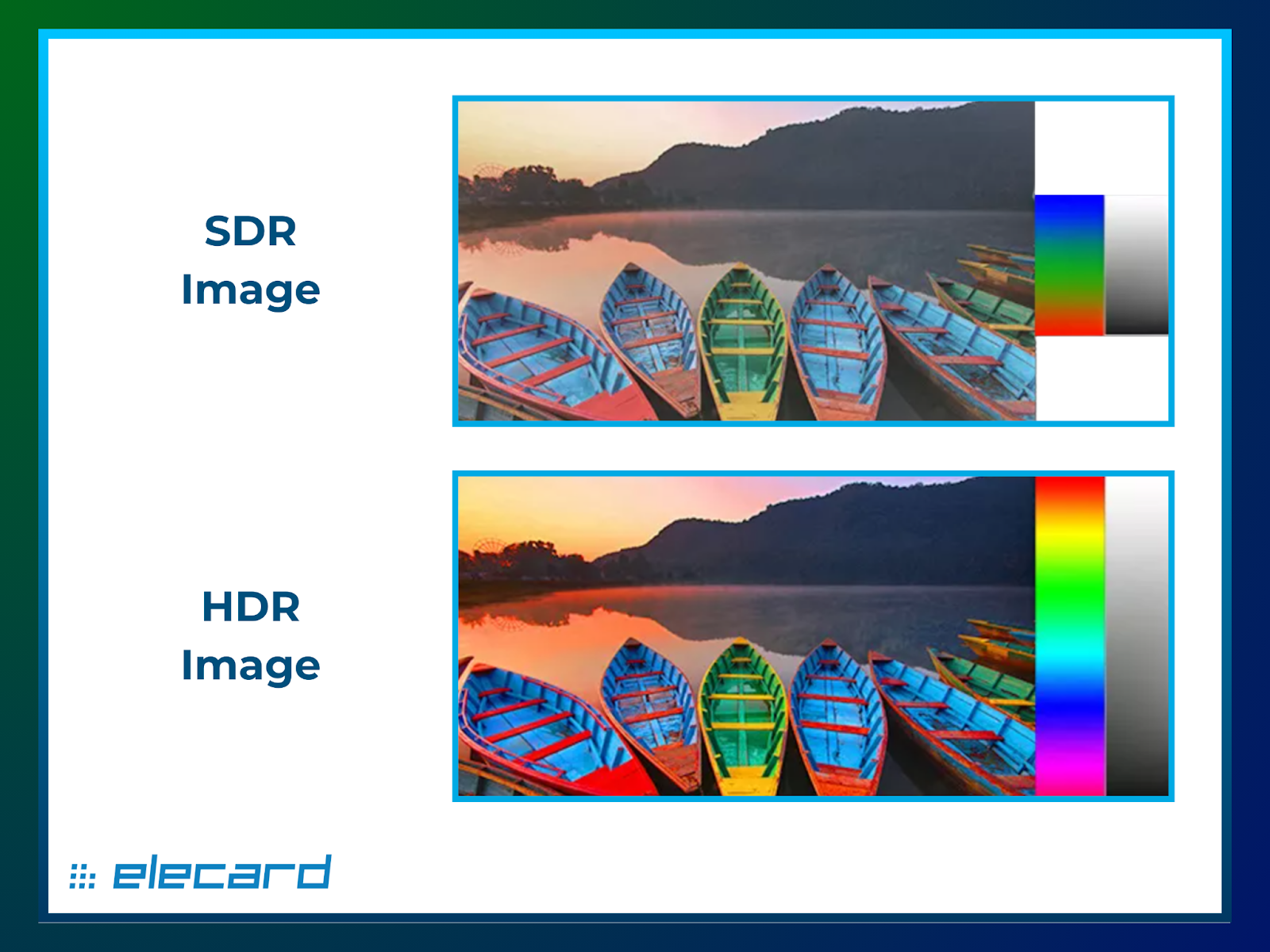
Visual comparison of SDR vs. HDR color gamut
With HDR, shadows are no longer lost in murky darkness, and highlights don’t appear blown out. Instead, the image gains depth and nuance, with more visible shades and details. The dynamic range becomes much closer to what the human eye naturally perceives.

Visual comparison of SDR vs. HDR brightness levels
How is HDR captured?
There are several ways to produce HDR content. For example, mobile devices often shoot multiple images at varying exposures (overexposed, normal, underexposed) and merge them using an HDR Merge algorithm.
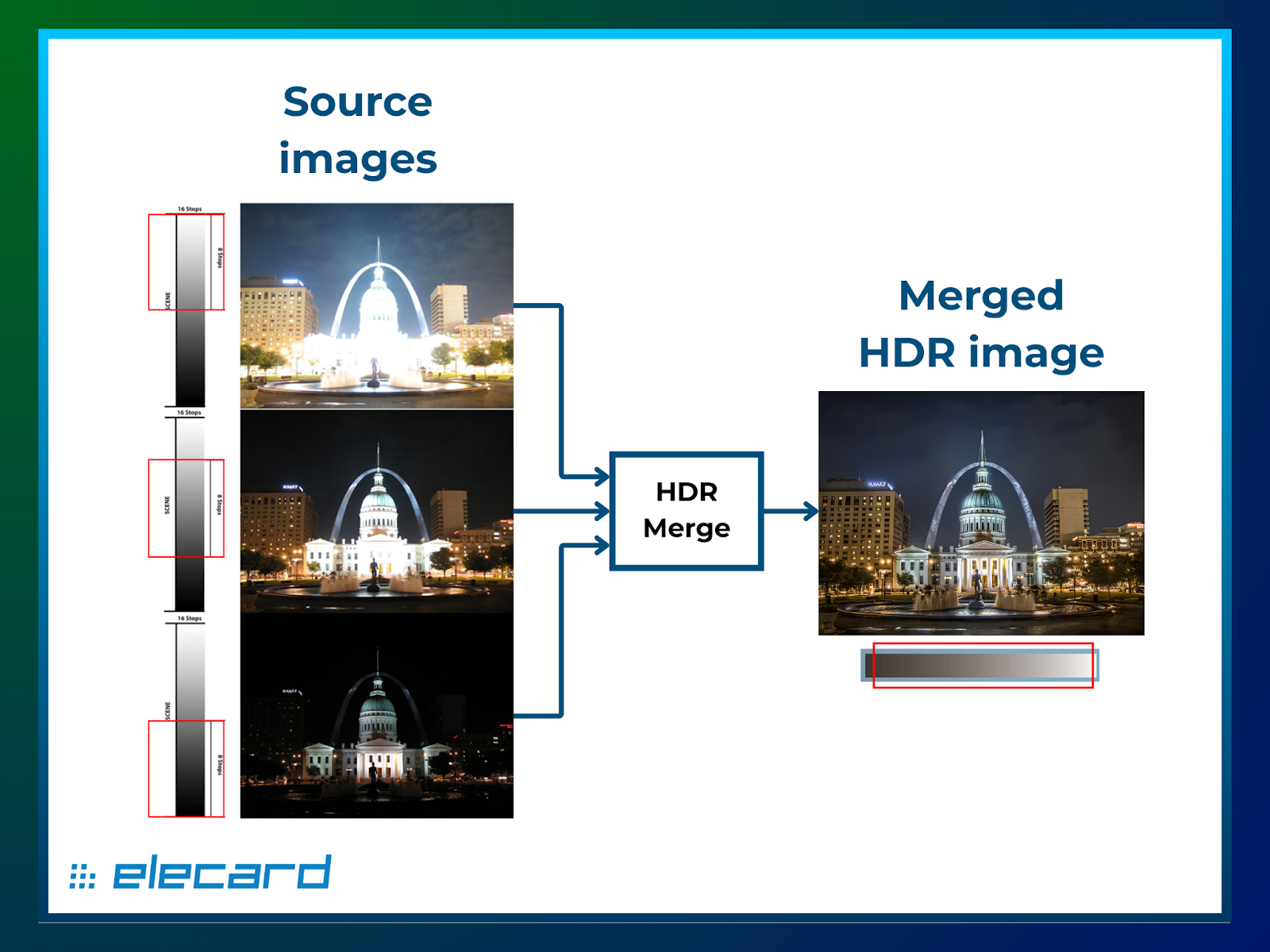
HDR image capture process on smartphones
This approach compensates for the limited capabilities of inexpensive mobile sensors.
Professional cameras, however, can capture the full dynamic range in a single take—without algorithmic blending. The result is a cleaner, more natural image that more accurately reflects real-world lighting and color.
Which HDR Format Should You Choose?
HDR isn’t a single technology but a family of standards. There are multiple HDR formats, each supported by different TV manufacturers. The most widely used include:
- HDR10: An open and royalty-free standard that uses static metadata. This means the same brightness and color space settings are applied throughout the entire movie or broadcast.
- HDR10+: An enhanced version of HDR10 that incorporates dynamic metadata, allowing brightness and contrast settings to adapt from scene to scene or even frame to frame. This provides more accurate detail rendering in both very dark and very bright areas.
- Dolby Vision: A premium, proprietary format that requires licensing. It supports the most advanced dynamic metadata, up to 12-bit color depth and peak brightness levels exceeding 4,000 nits. It is designed for top-tier content delivery.
- HLG (Hybrid Log-Gamma): A broadcast-friendly format that’s backward-compatible with SDR. It allows a single signal to be correctly displayed on both HDR and SDR devices without distortion. Although its color gamut and dynamic range are slightly narrower than Dolby Vision or HDR10+, that is generally sufficient for television.
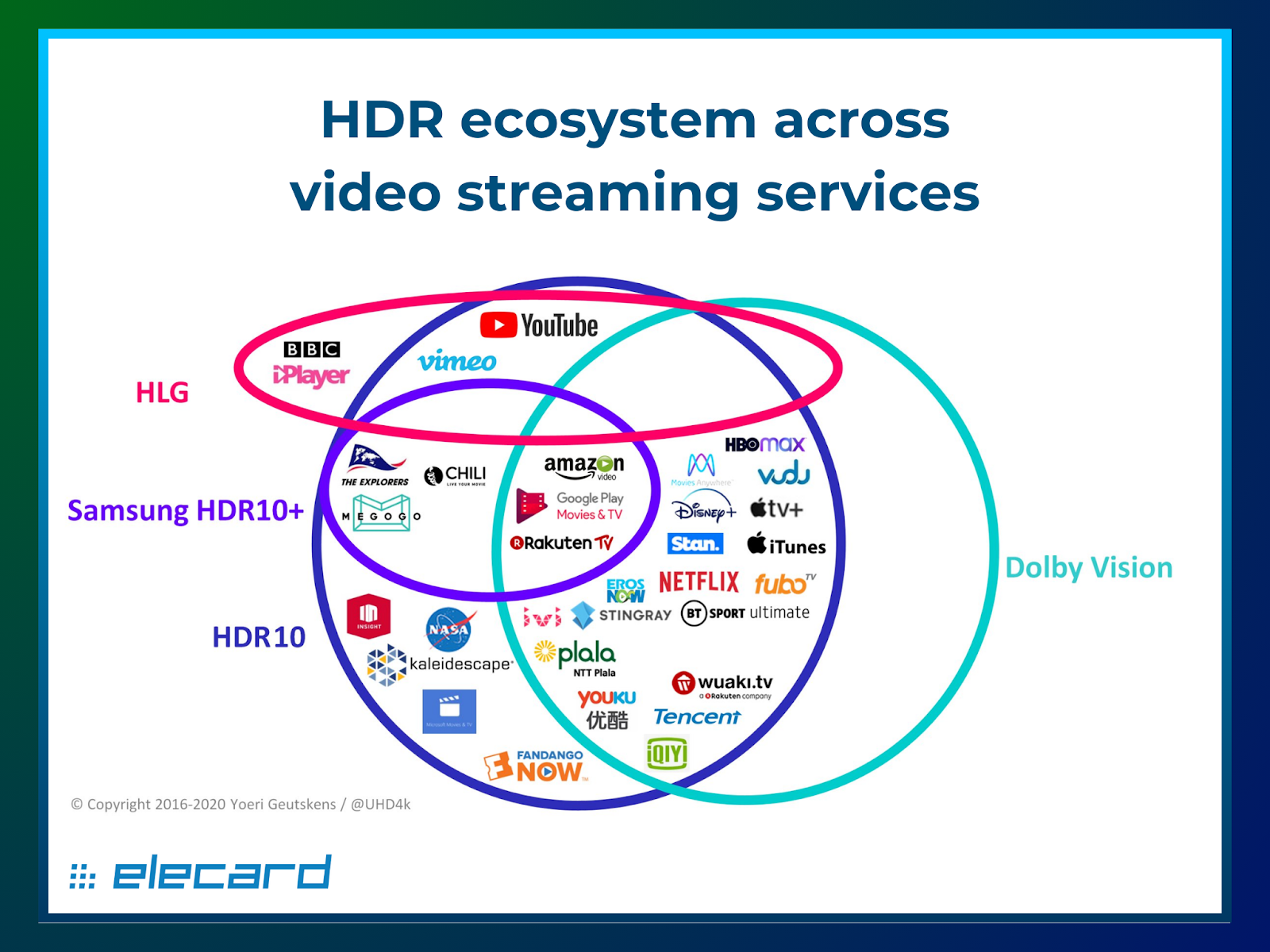
HDR format usage across streaming platforms
For professional broadcasting and scalable IPTV/OTT services, HLG is often the most practical choice. It is easy to implement, doesn’t require licensing, and delivers a noticeable improvement over SDR.
However, if you’re creating premium cinematic content, formats like Dolby Vision or HDR10+ may be more appropriate, depending on your budget and target audience.
How Common Is 4K HDR in Real-Life Broadcasting?
You might wonder: what percentage of broadcasters actually deliver content in 4K and HDR: 10%, 20%, or even 50%? Real-world data from Elecard Boro, a stream monitoring service, tells a different story.

Breakdown of SDR, 4K, and 4K+HDR usage
According to our monitoring, less than 1% of content is broadcast in 4K, and less than 0.1% in 4K HDR. Why so little? Stable, high-quality 4K HDR broadcasting remains rare because of several key challenges:
1. Encoding costs are high. Transcoding video in 4K HDR demands significant GPU resources, especially for real-time applications. The chart below based on CodecWorks shows the GPU load comparison between Full HD SDR and 4K HDR encoding.
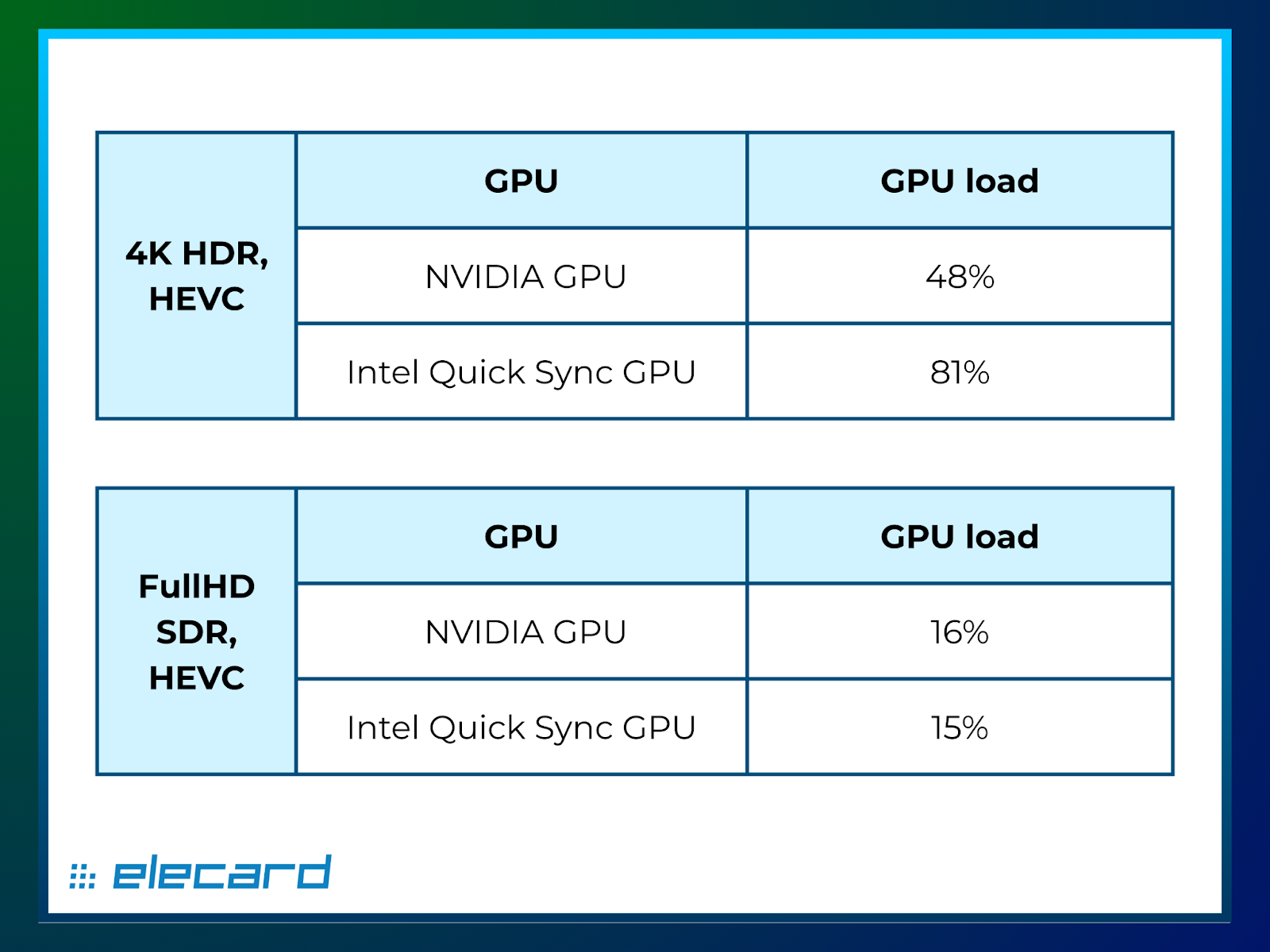
GPU load comparison between FullHD and 4K HDR
As you can see, a single 4K HDR channel can fully saturate a GPU, meaning only one channel per card. By contrast, the same hardware can handle up to six FullHD streams. This scalability bottleneck raises the per-channel cost considerably.
2. Transmission is expensive. Delivering 4K HDR content requires far more bandwidth than Full HD SDR. The bitrate difference, as observed in Elecard Boro, is often threefold.
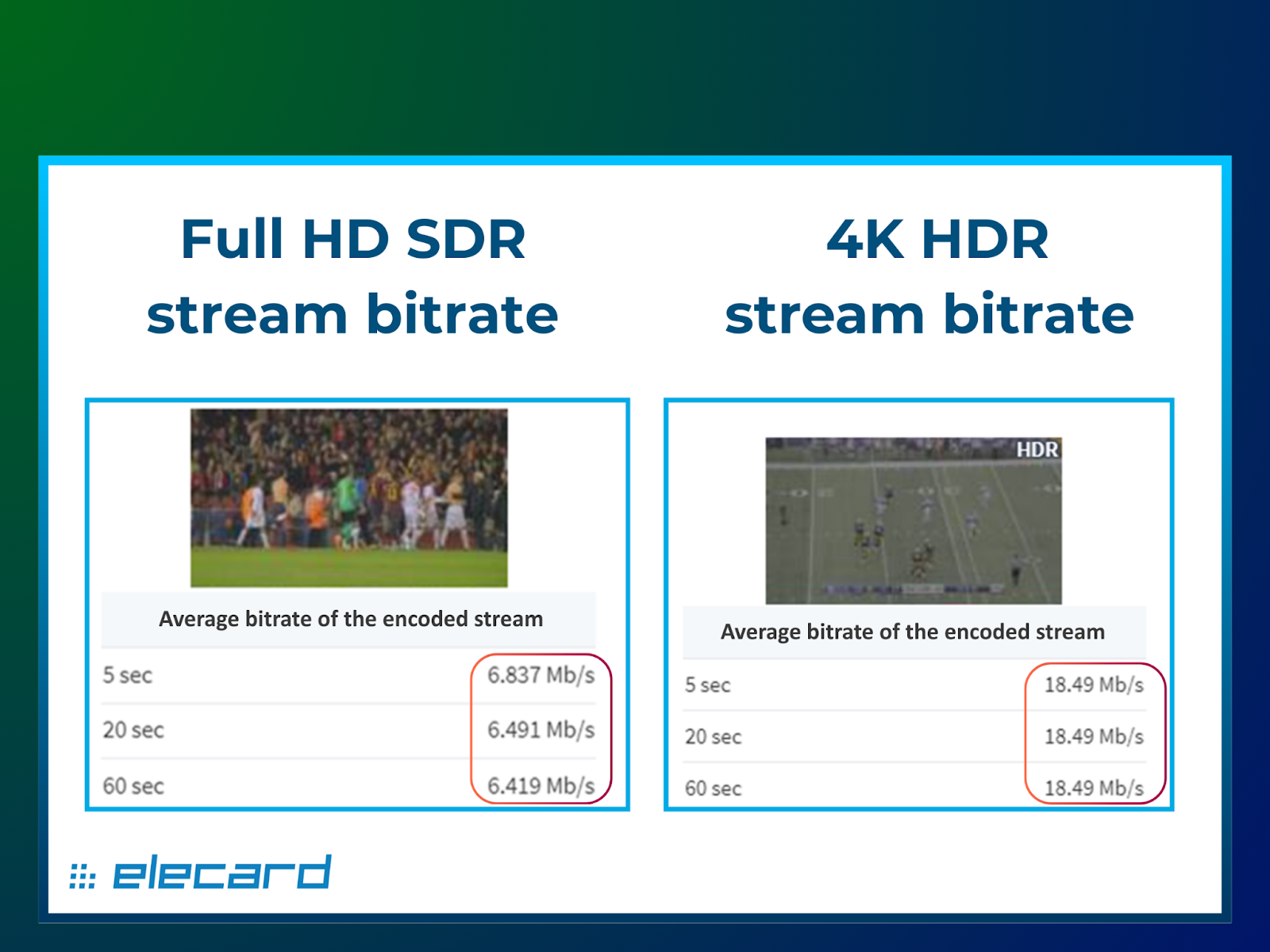
Bitrate comparison of FHD SDR vs. 4K HDR
Fast internet is still costly and not universally available, especially in corporate environments and regions with limited infrastructure. This limits both reach and the commercial feasibility of high-quality streaming.
3. Few playback devices. While 4K HDR-capable TVs are on the rise, they remain a minority in the market. These displays are still expensive, and most users continue consuming content on laptops, smartphones, or basic TVs, which do not support true HDR playback.
4. Limited сontent availability. Even if you own a TV labeled “4K HDR,” your chances of actually watching true HDR content are relatively low. Such content remains rare: the available library remains limited, and most streaming platforms only offer it in small volumes.
Because of these constraints, 4K and HDR remain premium technologies—used in niche scenarios rather than at scale. Mass adoption is currently economically impractical, hindered by infrastructural limitations.
It is worth noting, however, that nearly all modern films are shot in ultra-high resolution with HDR. Yet, for distribution, that content is compressed to optimize data handling and delivery costs.
Conclusion
4K and HDR bring a clear and noticeable improvement in image quality: visuals become sharper, more vibrant, and more lifelike: even non-experts can see the difference. However, large-scale broadcasting in these formats is still limited. The main barriers are resource-intensive encoding, high network requirements, and a relatively small number of compatible playback devices.
Despite these challenges, interest in high-quality broadcasting standards continues to grow. Many broadcasters already view 4K HDR as a long-term investment in both content quality and user experience.
For everyday broadcasting to a wide audience, HLG remains the most practical choice: it balances quality and compatibility, requires no licensing fees, and integrates more easily into existing infrastructure. For premium content, Dolby Vision or HDR10+ can be considered, depending on your target audience and budget.
If you're planning to build a modern broadcast infrastructure or would like to explore real-world implementation cases, drop us a line at sales@elecard.com. We would be happy to discuss your project needs.
At Elecard, we love sharing what we’ve learned from the front lines of the broadcast industry — from emerging technologies and practical solutions to real-world challenges our clients face across the globe. If you’re into behind-the-scenes insights and tech deep dives, stick around — there’s plenty more to come.
Article by Vitalii Bauman, Technical Support Engineer at Elecard
